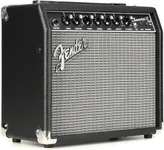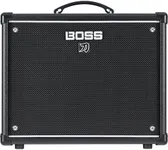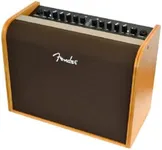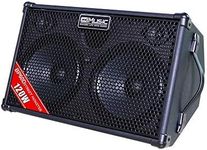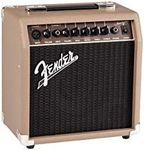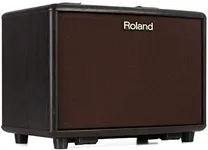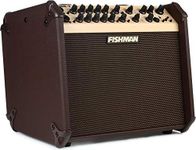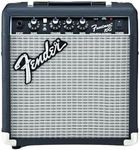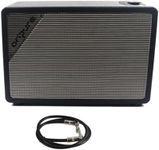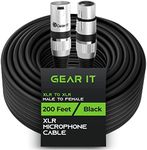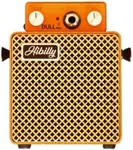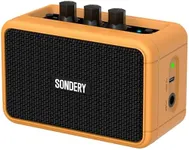Buying Guide for the Best Acoustic Electric Amps
Choosing the right acoustic-electric amp can significantly enhance your playing experience, whether you're performing live, recording, or just practicing at home. The right amp will amplify the natural sound of your acoustic guitar while preserving its tonal qualities. To make an informed decision, it's important to understand the key specifications and how they align with your needs and preferences.Power Output (Wattage)Power output, measured in watts, determines the volume and headroom of the amp. For small venues or home practice, an amp with 20-30 watts is usually sufficient. For larger venues or outdoor performances, you might need an amp with 50-100 watts or more. Consider where you'll be using the amp most frequently to choose the right power output for your needs.
Speaker SizeThe size of the speaker affects the amp's sound projection and tonal characteristics. Smaller speakers (6-8 inches) are more portable and can be great for practice or small gigs, offering a more focused sound. Larger speakers (10-12 inches) provide a fuller sound and are better suited for larger venues. Think about the balance between portability and sound quality when selecting the speaker size.
ChannelsChannels refer to the number of separate inputs and controls an amp has. Single-channel amps are simpler and often more affordable, suitable for straightforward amplification. Multi-channel amps offer more versatility, allowing you to switch between different sounds or connect multiple instruments/microphones. If you need flexibility in your performances or recordings, a multi-channel amp might be the better choice.
EffectsMany acoustic-electric amps come with built-in effects like reverb, chorus, and delay. These effects can enhance your sound without needing additional pedals. If you enjoy experimenting with different sounds or want to add depth to your performance, look for an amp with a variety of built-in effects. If you prefer a clean, unaltered sound, a simpler amp without many effects might be more suitable.
Inputs and OutputsConsider the types and number of inputs and outputs the amp offers. Common inputs include 1/4-inch jacks for instruments and XLR inputs for microphones. Outputs might include line out, headphone out, and DI out for direct recording. Ensure the amp has the necessary connections for your setup, whether you're playing solo, with a band, or recording.
PortabilityPortability is an important factor if you plan to move your amp frequently. Lighter, more compact amps are easier to transport but may sacrifice some power and sound quality. Heavier, larger amps can offer better sound but are more cumbersome to move. Consider how often you'll need to transport the amp and balance this with your sound requirements.
Build QualityThe build quality of an amp affects its durability and longevity. Look for amps with sturdy construction, quality materials, and good reviews regarding reliability. If you plan to use the amp frequently or in various environments, investing in a well-built amp can save you from potential issues down the line.
